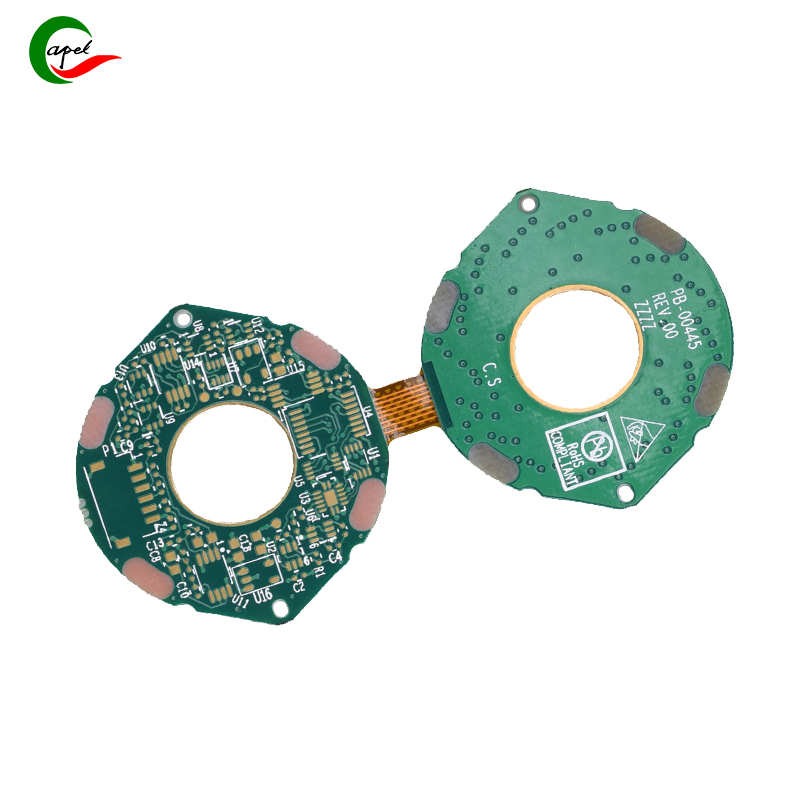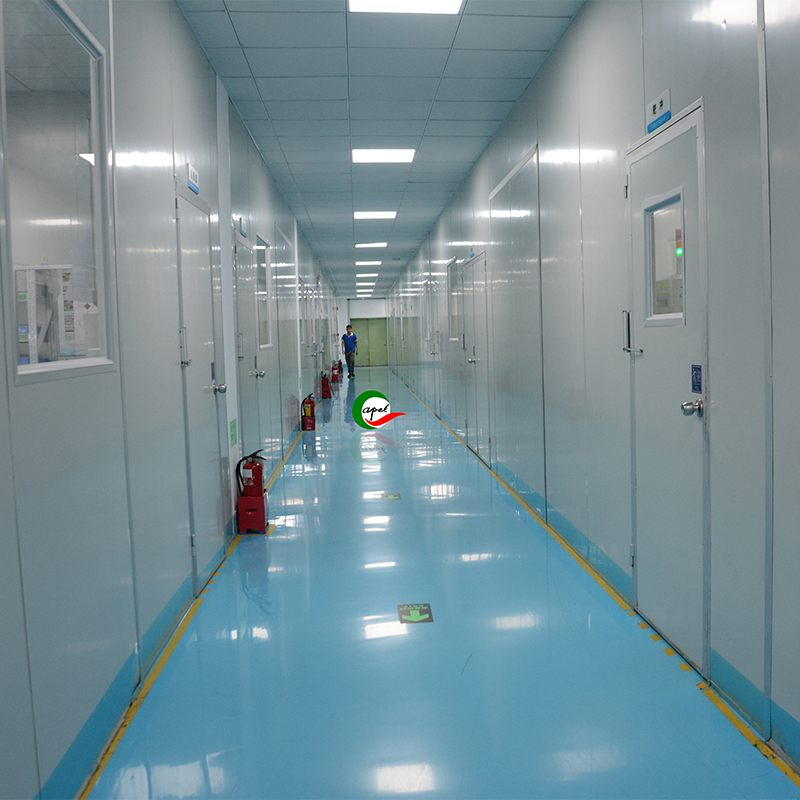In the fast-growing electronics manufacturing field, it is imperative to maintain a competitive advantage through technological progress and innovation. One innovation that has received much attention is the rigid-flex printed circuit board. By combining the advantages of rigid and flexible PCBs, this solution offers several advantages. From improving reliability and reducing weight to optimizing space utilization and increasing design flexibility, the use of flex rigid PCBs can revolutionize electronic design. Here we’ll explore the advantages of incorporating rigid-flex PCBs into your electronics projects, focusing on how they can enhance performance and improve overall product quality.
Enhanced Reliability:
Rigid-flex printed board provides higher reliability with its unique structure and design features. Unlike traditional rigid or flex PCBs, rigid flexible PCBs combine the strength and rigidity of rigid boards with the flexibility of flexible materials. The seamless integration of the two materials creates a mechanically stable structure that is less prone to failure.
For rigid-flex PCBs, no connectors are required between the rigid and flexible parts. This eliminates potential weaknesses that connectors could introduce and reduces the risk of signal interference or dropped connections. The absence of connectors also simplifies the overall assembly process and reduces the possibility of errors during manufacturing.
Additionally, a rigid-flex PCB requires fewer solder joints than using separate rigid and flex PCBs. The reduction in solder joints minimizes the possibility of solder joint failure, a common cause of electronic equipment failure. The result is improved overall performance and improved product reliability.
Additionally, rigid flex Printed circuit boards are also more resistant to temperature changes and mechanical stress. The materials used in its construction have been carefully selected to handle a wide range of operating conditions without compromising stability or reliability.
In addition, rigid-flex PCBs have excellent resistance to vibration, shock and thermal stress. These characteristics make them ideal for applications in harsh environments where equipment may be exposed to extreme conditions. Enhanced reliability under challenging conditions helps reduce maintenance costs, extend product life and minimize the risk of downtime, ensuring optimum system performance.
Space Optimization:
The space-saving advantages of rigid-flex PCB are very beneficial for the design and development of electronic equipment. By combining the advantages of rigid and flexible PCBs, manufacturers can achieve higher component density and placement efficiency. This means more components can be packed into less space, resulting in smaller and lighter electronics.
The ability of rigid-flex boards to bend, fold, or bend also opens up new possibilities for device design. With the flexibility of the circuit boards, manufacturers can more effectively use the three-dimensional space inside the enclosure. This means devices can be designed to fit non-traditional form factors, allowing for more compact and creative designs. This is especially useful for industries with limited space, such as medical devices, aerospace, wearables, and automotive electronics.
By utilizing flexible rigid PCBs, manufacturers can optimize the use of available space within devices, enabling efficient and creative device designs. This not only results in smaller and lighter electronics, but also enables the integration of more features and functions without sacrificing performance.
Design Freedom and Flexibility:
The design freedom and flexibility offered by rigid-flex PCBs brings many benefits to the product design and manufacturing process. The flexible portion of these printed circuit boards removes the limitations of traditional rigid PCBs, allowing complex custom designs for specific applications. This opens up new possibilities for designers to create innovative and unique electronic products.
One of the great advantages of rigid-flex PCBs is their ability to bend, fold, or twist. This flexibility of the PCB allows greater freedom in interconnect routing, making complex designs easier to implement. The ability to route in three dimensions creates more efficient layouts and can minimize signal interference. This is especially useful in applications that require a compact design or have specific space requirements.
The flexibility of rigid-flex PCBs also extends to component placement. These PCBs can be shaped to meet unique product requirements such as curved displays or irregularly shaped enclosures. This offers greater design possibilities, as manufacturers can optimize the arrangement of components within a product. This not only enhances the visual appeal of the final product, but also improves functionality and user experience.
In addition to design flexibility, rigid-flex PCBs offer advantages during the manufacturing process. Elimination of extra wire harnesses and connectors simplifies assembly, reduces the risk of human error and increases manufacturing efficiency. This saves production costs as fewer components and time-consuming processes are required. Additionally, a simplified assembly process results in a more reliable end product with fewer points of failure.
Improved Signal Integrity:
One of the main benefits of improving signal integrity with rigid-flex PCBs is the reduction in connector count. Connectors are often a major source of signal loss in traditional PCB designs because they introduce additional resistance, capacitance, and inductance into the signal path. With a rigid-flex PCB, the need for connectors can be greatly reduced or even eliminated, resulting in shorter signal paths and lower signal loss. This results in improved signal integrity and better overall performance of electronic devices.
In high speed applications, signal attenuation due to EMI is a common challenge. The flex portion of a rigid-flex PCB presents the opportunity to design controlled impedance structures. By carefully selecting materials and implementing shielding techniques, the flex area can be optimized to prevent EMI interference. This ensures that the signal transmitted through the curved area is not affected by external noise sources, resulting in more accurate and reliable communication.
Additionally, the flexibility of rigid-flex PCBs allows for better mechanical stability. Traditional PCBs are more susceptible to mechanical stress and vibration, which can affect signal quality. Rigid-flex PCBs, on the other hand, can withstand bending, folding, and twisting without compromising signal integrity. This is especially beneficial in applications where the device may be subjected to physical stress, such as in portable electronics or automotive applications.
Additionally, integrating rigid and flexible areas in a single PCB allows for more efficient heat dissipation. Heat generation is a common problem in electronic equipment, especially those with high power requirements. By designing a PCB with flexible areas, heat-generating components can be strategically placed on rigid parts, while the flexible parts can act as heat sinks to dissipate heat more efficiently. This prevents overheating and ensures optimum performance and reliability of the device.
In Summary:
Flex rigid PCBs are a game changer in the world of electronic design. By combining the advantages of rigid and flexible materials, these PCBs offer higher reliability, optimized space utilization, flexible design options, and enhanced signal integrity. With the ever-increasing demand for smaller and more complex electronic devices, the integration of rigid-flex PCBs opens up endless possibilities for innovation and advancement across industries. By adopting this state-of-the-art solution, Capel rigid flexible pcb manufacturers can stay at the cutting edge of technology and create cutting-edge products. Don’t miss out on the future of electronics design -contact us and incorporate rigid-flex PCBs into your next project and experience the many advantages they offer.
Shenzhen Capel Technology Co., Ltd.established its own rigid flex pcb factory in 2009 and it is a professional Flex Rigid Pcb Manufacturer. With 15 years of rich project experience, rigorous process flow, excellent technical capabilities, advanced automation equipment,comprehensive quality control system, and Capel has a professional experts team to provide global customers with high-precision, high-quality rigid flex board, hdi Rigid Flex Pcb, Rigid Flex Pcb Fabrication, rigid-flex pcb assembly,fast turn rigid flex pcb,quick turn pcb prototypes .Our responsive pre-sales and after-sales technical services and timely delivery enable our clients to quickly seize market opportunities for their projects.
Post time: Aug-26-2023
Back








